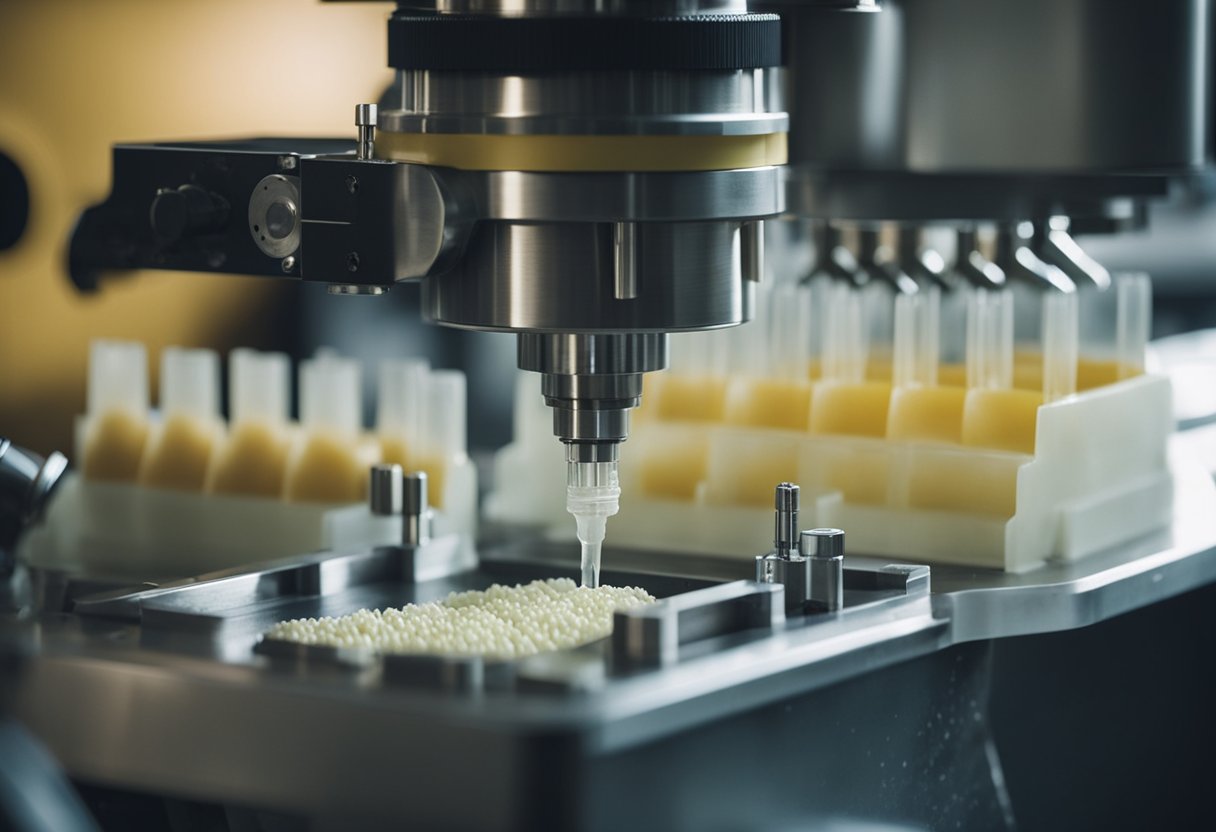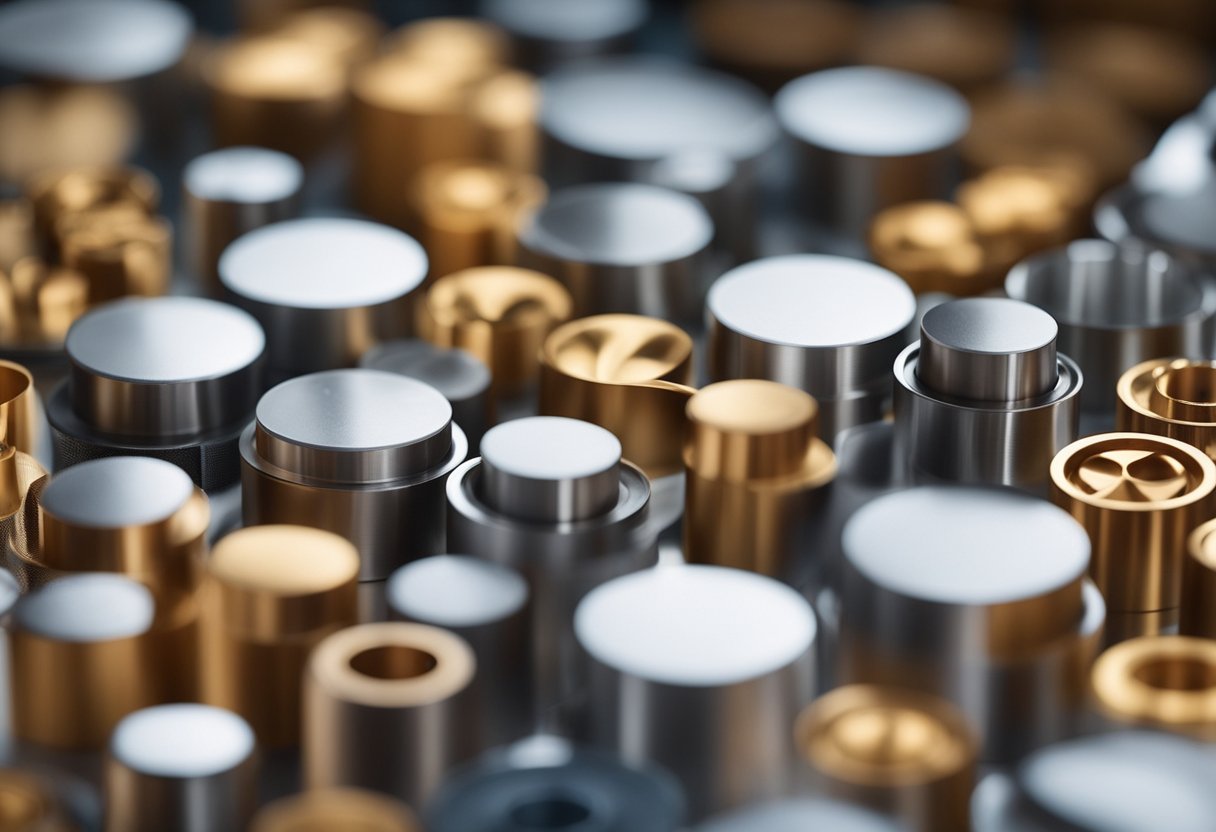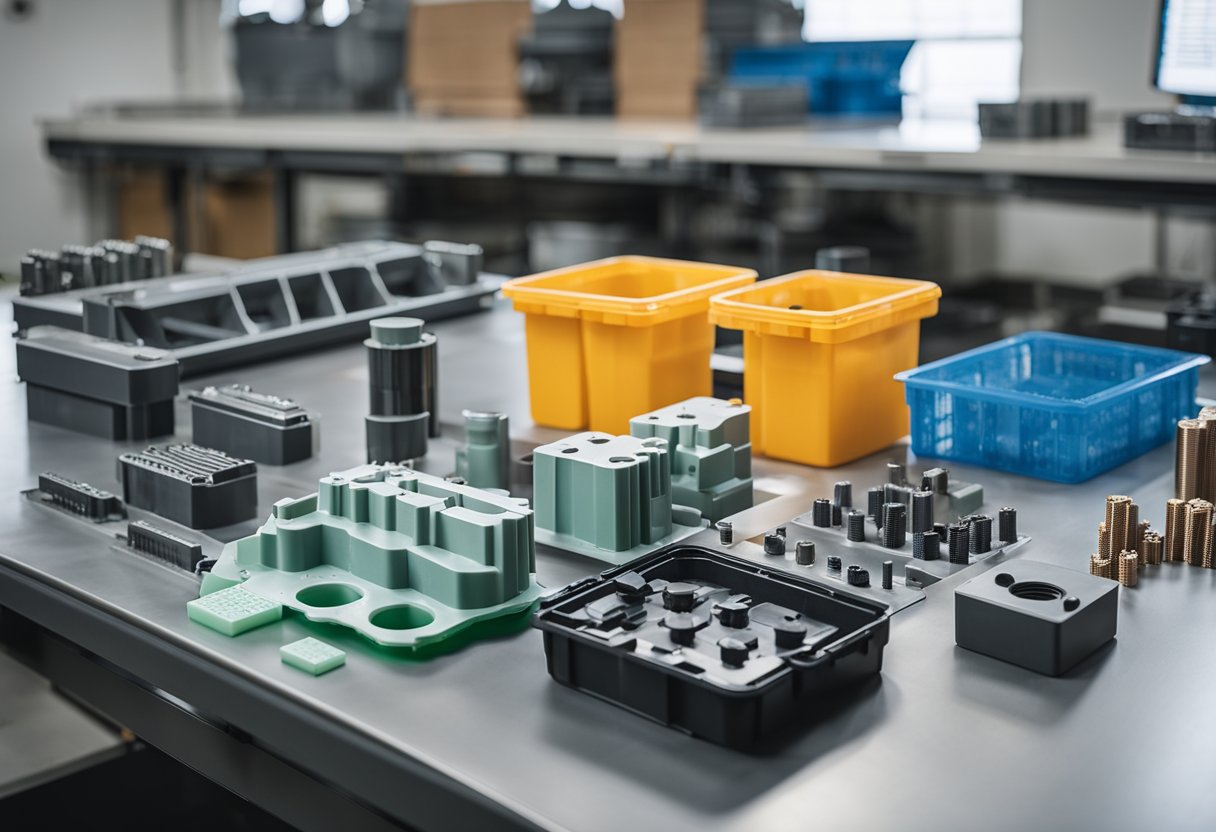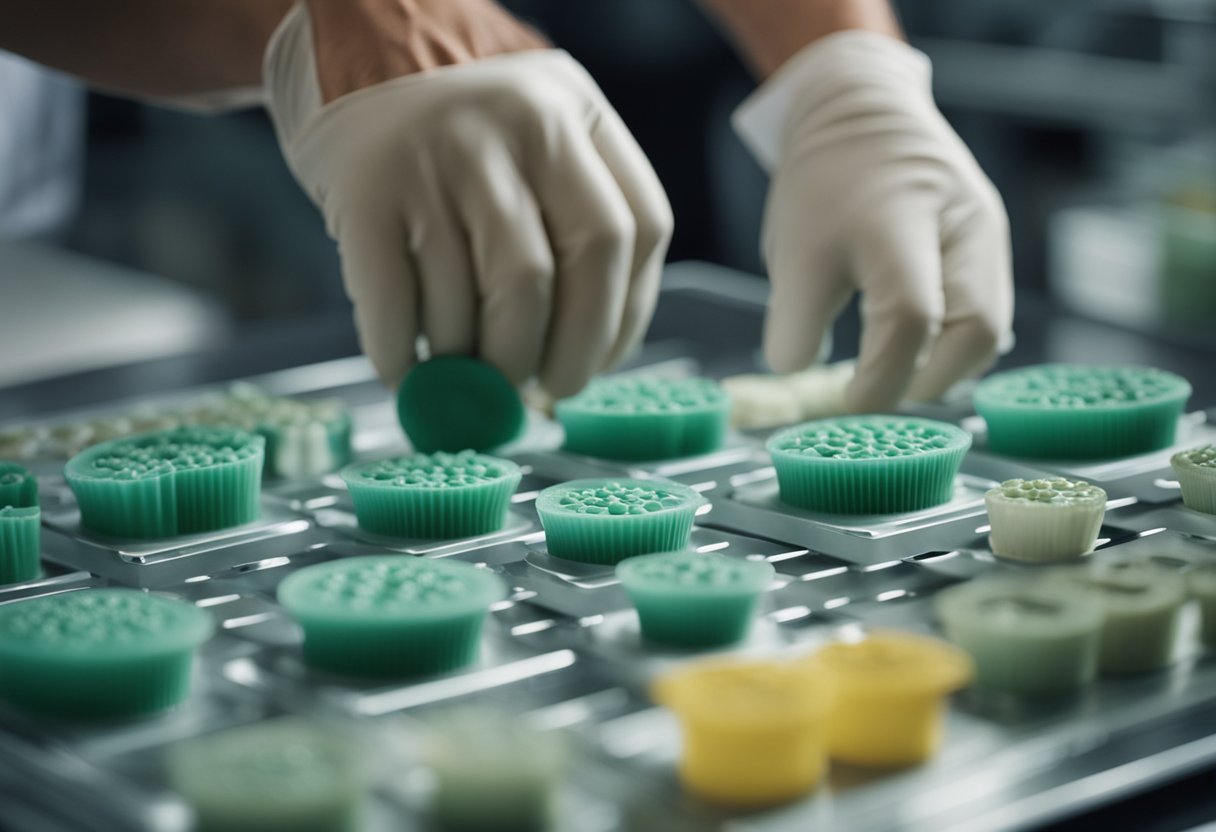If you're in the business of manufacturing plastic parts, then you'll undoubtedly need to know about mold materials for plastic injection. The right mold material can make all the difference in the quality and durability of your final product, as well as the efficiency of your manufacturing process.

There are several types of mold materials to choose from, each with its own unique properties and advantages. Some of the most common types of mold materials include steel, aluminum, and copper alloys. Each of these materials has its own strengths and weaknesses, and the choice of which to use will depend on the specific needs of your project.
When selecting a mold material, it's important to consider factors such as the type of plastic being used, the desired surface finish of the final product, and the expected production volume. Additionally, proper maintenance and care of molds is crucial to ensure their longevity and prevent defects in the final product.
Key Takeaways
- The choice of mold material can greatly impact the quality and efficiency of plastic injection manufacturing processes.
- Steel, aluminum, and copper alloys are common mold materials, each with their own unique properties and advantages.
- Proper mold material selection and maintenance is crucial for ensuring high-quality, defect-free final products.
Types of Mold Materials

When it comes to plastic injection molding, choosing the right mold material is crucial for producing high-quality parts. There are several types of mold materials available, each with its own unique properties and advantages. In this section, we will discuss three main types of mold materials: Thermoplastics, Thermosetting Plastics, and Elastomers.
Thermoplastics
Thermoplastics are the most common type of mold material used in plastic injection molding. They are known for their ability to be melted and re-melted multiple times without losing their properties. This makes them ideal for production runs that require a high volume of parts. Some examples of thermoplastics used in injection molding include Acrylonitrile Butadiene Styrene (ABS), Polypropylene (PP), and Polycarbonate (PC).
Thermosetting Plastics
Thermosetting plastics are another type of mold material used in plastic injection molding. Unlike thermoplastics, they cannot be melted and re-melted multiple times. Instead, they undergo a chemical reaction during the molding process that causes them to set in shape permanently. This makes them ideal for parts that require high heat resistance and durability. Some examples of thermosetting plastics used in injection molding include Phenolic, Epoxy, and Melamine.
Elastomers
Elastomers are a type of mold material used for producing parts that require flexibility and elasticity. They are known for their ability to be stretched and then return to their original shape. This makes them ideal for parts such as seals, gaskets, and other rubber-like components. Some examples of elastomers used in injection molding include Silicone, Polyurethane, and Natural Rubber.
Overall, choosing the right mold material is crucial for producing high-quality parts in plastic injection molding. By understanding the unique properties and advantages of each type of mold material, you can make an informed decision on which material is best suited for your specific application.
Properties of Mold Materials

When it comes to selecting the right mold material for plastic injection, you need to consider several properties. In this section, we will explore the three most important properties: thermal stability, chemical resistance, and mechanical strength.
Thermal Stability
Thermal stability is a crucial property for mold materials because they are subjected to high temperatures during the injection molding process. If the material cannot withstand the heat, it will degrade, resulting in poor quality parts. Therefore, you should choose a material that has high thermal stability.
Some of the most common mold materials with high thermal stability include:
- H-13 steel
- P-20 steel
- NAK-55 steel
Chemical Resistance
Chemical resistance is another important property to consider when selecting mold materials. The mold material should be able to withstand the chemicals used during the plastic injection molding process. If the material is not resistant to the chemicals, it can corrode, leading to poor quality parts.
Some of the most common mold materials with high chemical resistance include:
- Stainless steel
- Aluminum
- Copper alloys
Mechanical Strength
Mechanical strength is the ability of a material to withstand external forces without breaking or deforming. The mold material should have high mechanical strength to ensure that it can withstand the pressure and stress of the injection molding process.
Some of the most common mold materials with high mechanical strength include:
- Tool steel
- Aluminum alloys
- Beryllium copper
By considering these three properties, you can choose the right mold material for your plastic injection molding process. Keep in mind that each material has its own advantages and disadvantages, so you should choose the one that best fits your specific needs.
Mold Material Selection

When it comes to plastic injection molding, selecting the right mold material is crucial to ensure the success of your project. The mold material you choose should meet the specific requirements of your application, while also taking into account important factors such as product requirements, manufacturing considerations, and cost implications.
Product Requirements
Before selecting a mold material, you need to consider the product requirements. This includes the size and shape of the part, the required tolerances, and the expected lifespan of the product. For example, if you need to produce a part with complex geometries and tight tolerances, you may need a mold material that can withstand high temperatures and pressures, such as hardened steel or beryllium copper.
Manufacturing Considerations
Another important factor to consider is the manufacturing process. The mold material you choose should be compatible with the injection molding process, and it should be able to withstand the high pressures and temperatures involved. Additionally, you need to consider the ease of machining and polishing the mold material, as well as its ability to resist wear and corrosion.
Cost Implications
Finally, you need to take into account the cost implications of your mold material selection. While some mold materials may be more expensive upfront, they may offer longer lifespan and require less maintenance, resulting in lower long-term costs. On the other hand, choosing a cheaper mold material may result in lower upfront costs, but it may require more frequent maintenance and replacement, leading to higher long-term costs.
In summary, selecting the right mold material for plastic injection molding requires careful consideration of product requirements, manufacturing considerations, and cost implications. By taking these factors into account, you can ensure that your project is successful and cost-effective.
Mold Design Considerations
When designing a mold for plastic injection, there are several key considerations to keep in mind. These considerations include mold configuration, surface finish, venting, and cooling. By carefully considering each of these factors, you can ensure that your mold will produce high-quality plastic parts that meet your specifications.
Mold Configuration
The mold configuration refers to the way in which the mold is designed and constructed. There are several different types of mold configurations to choose from, including single-cavity, multi-cavity, and family molds. Each type of mold has its own advantages and disadvantages, and the best choice depends on factors such as the size and complexity of the part, production volume, and budget.
Surface Finish
The surface finish of the mold is an important consideration, as it can affect the quality of the plastic parts produced. A smooth surface finish is generally preferred, as it can help to reduce the occurrence of defects such as sink marks and warping. The surface finish can be achieved through a variety of methods, including polishing, texturing, and coating.
Venting and Cooling
Venting and cooling are two critical aspects of mold design that can greatly impact the final quality of the plastic parts produced. Venting refers to the process of allowing air to escape from the mold cavity during injection, while cooling refers to the process of rapidly cooling the plastic part after injection to prevent warping and distortion. Proper venting and cooling can help to minimize defects and ensure consistent part quality.
Overall, careful consideration of mold configuration, surface finish, venting, and cooling is essential when designing a mold for plastic injection. By taking these factors into account, you can ensure that your mold will produce high-quality plastic parts that meet your specifications.
Maintenance and Care of Molds
Proper maintenance and care of molds are essential to ensure their longevity and consistent performance. Neglecting mold maintenance can lead to defects in the final product, increased downtime, and costly repairs. In this section, we will discuss some basic cleaning procedures, storage conditions, and wear and damage prevention techniques to keep your molds in good condition.
Cleaning Procedures
Cleaning the molds is an essential part of mold maintenance. It is recommended that you clean the molds after every production run. Failure to do so can lead to the accumulation of plastic residue, which can affect the quality of the final product. Here are some basic cleaning procedures:
- Start by removing the mold from the injection molding machine and placing it on a clean surface.
- Use a soft-bristled brush to remove any loose debris or plastic residue from the mold surface.
- Use a lint-free cloth or cotton swab to apply a mild cleaning solution to the mold surface. Avoid using abrasive cleaners or solvents that can damage the mold surface.
- Rinse the mold with clean water and dry it thoroughly using a lint-free cloth.
Storage Conditions
Proper storage conditions are essential to prevent damage to the mold surface and maintain its accuracy. Here are some tips for storing your molds:
- Store the molds in a dry and clean environment to prevent the accumulation of moisture and dirt.
- Apply a light coat of rust inhibitor to the mold surface to prevent rust formation.
- Store the molds in a temperature-controlled environment to prevent warping or cracking.
Wear and Damage Prevention
Preventing wear and damage to the mold surface is essential to ensure its longevity. Here are some tips to prevent wear and damage:
- Use the right mold material for the production run to prevent excessive wear or damage to the mold surface.
- Monitor the production process to prevent excessive pressure or temperature that can damage the mold surface.
- Inspect the mold surface regularly for signs of wear or damage, such as cracks, scratches, or dents.
- Repair any wear or damage to the mold surface immediately to prevent further damage or defects in the final product.
In conclusion, proper maintenance and care of molds are essential to ensure their longevity and consistent performance. By following the cleaning procedures, storage conditions, and wear and damage prevention techniques discussed in this section, you can keep your molds in good condition and prevent defects in the final product.





